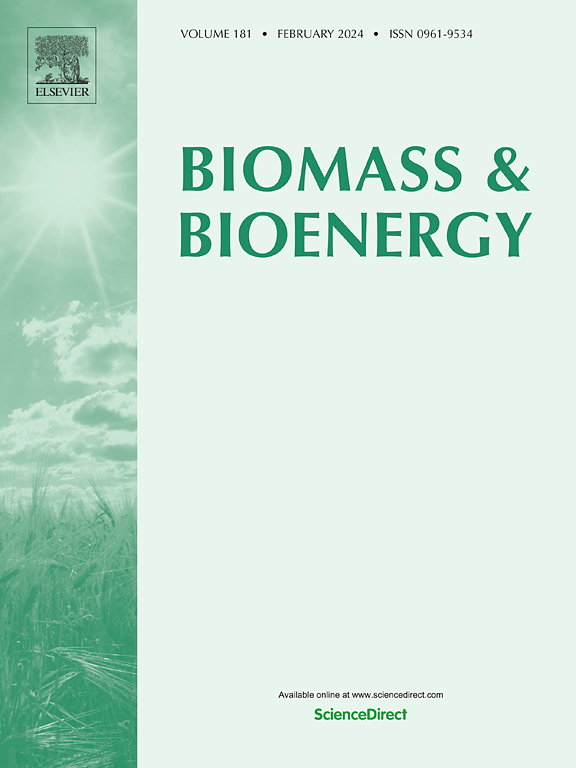Evaluation of chemical and thermochemical pretreatment technologies for sugarcane trash: Energy efficiency and environmental impacts
IF 5.8
2区 生物学
Q1 AGRICULTURAL ENGINEERING
引用次数: 0
Abstract
Sugarcane trash (ST) shows promise as an underused biomass from sugar biorefineries. Pretreatment processes are necessary to convert the complex ST structure into valorized products. This study compared ST sugar recovery, energy efficiency, and waste generation performances of five pretreatment techniques: dilute acid (ACD), alkaline sodium hydroxide (AKL-NaOH), alkaline hydrogen peroxide (AKL-H2O2), liquid hot water (LHW), and organosolv (ORG). At the optimal temperature, time, and catalyst dosage maximum glucose recovery yields ranged from 70.84 % to 87.57 % with LHW > ORG > AKL-H2O2 > AKL-NaOH > ACD, resulted from alterations in biomass microstructure and crystallinity. The energy efficiency ranged from 0.200 to 0.693 kg sugar recovery/kWh, with comparable efficiency achieved by ORG, LHW, and ALK-H2O2 but markedly lower than ACD and AKL-NaOH. The waste generation factor ranged from 0.037 to 3.462 kg of waste generation/kg of sugar with the lowest for LHW process followed by ORG, ACD, AKL-NaOH, and AKL-H2O2, respectively. The LHW pretreatment at 180 °C for 30 min was chosen as a promising method in terms of glucose recovery and waste generation with moderate energy efficiency. The LHW process also generated relatively low inhibitory by-products from sugar dehydration although with the presence of high organic acid levels in the liquid phase. Our works provides a platform for using ST as starting material in biorefineries.

求助全文
约1分钟内获得全文
求助全文
来源期刊

Biomass & Bioenergy
工程技术-能源与燃料
CiteScore
11.50
自引率
3.30%
发文量
258
审稿时长
60 days
期刊介绍:
Biomass & Bioenergy is an international journal publishing original research papers and short communications, review articles and case studies on biological resources, chemical and biological processes, and biomass products for new renewable sources of energy and materials.
The scope of the journal extends to the environmental, management and economic aspects of biomass and bioenergy.
Key areas covered by the journal:
• Biomass: sources, energy crop production processes, genetic improvements, composition. Please note that research on these biomass subjects must be linked directly to bioenergy generation.
• Biological Residues: residues/rests from agricultural production, forestry and plantations (palm, sugar etc), processing industries, and municipal sources (MSW). Papers on the use of biomass residues through innovative processes/technological novelty and/or consideration of feedstock/system sustainability (or unsustainability) are welcomed. However waste treatment processes and pollution control or mitigation which are only tangentially related to bioenergy are not in the scope of the journal, as they are more suited to publications in the environmental arena. Papers that describe conventional waste streams (ie well described in existing literature) that do not empirically address ''new'' added value from the process are not suitable for submission to the journal.
• Bioenergy Processes: fermentations, thermochemical conversions, liquid and gaseous fuels, and petrochemical substitutes
• Bioenergy Utilization: direct combustion, gasification, electricity production, chemical processes, and by-product remediation
• Biomass and the Environment: carbon cycle, the net energy efficiency of bioenergy systems, assessment of sustainability, and biodiversity issues.
 求助内容:
求助内容: 应助结果提醒方式:
应助结果提醒方式:


